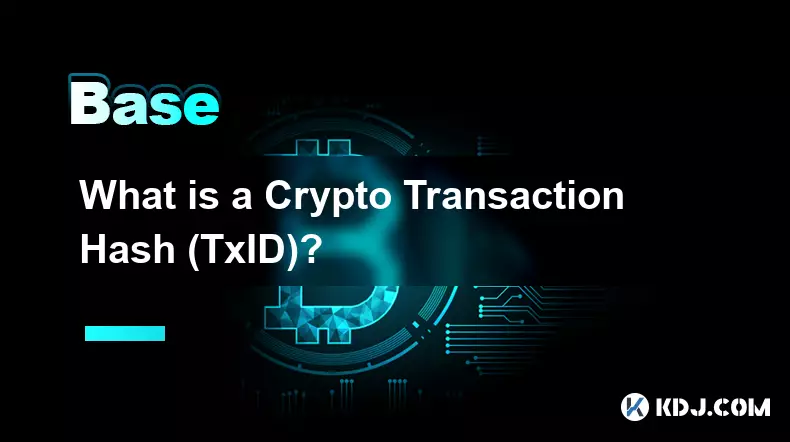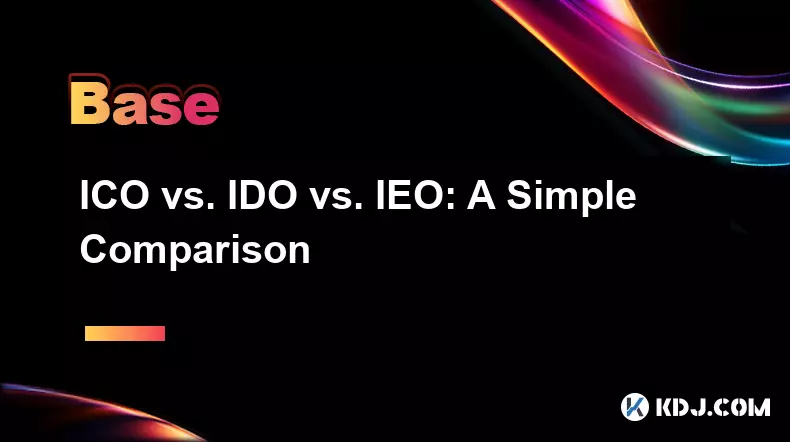-
 Bitcoin
Bitcoin $111200
0.44% -
 Ethereum
Ethereum $4302
0.12% -
 XRP
XRP $2.835
0.93% -
 Tether USDt
Tether USDt $1.000
0.06% -
 BNB
BNB $870.9
1.41% -
 Solana
Solana $203.8
0.29% -
 USDC
USDC $0.9999
0.03% -
 Dogecoin
Dogecoin $0.2178
1.53% -
 TRON
TRON $0.3284
-0.90% -
 Cardano
Cardano $0.8288
0.92% -
 Hyperliquid
Hyperliquid $47.24
1.45% -
 Chainlink
Chainlink $22.34
0.67% -
 Ethena USDe
Ethena USDe $1.001
0.05% -
 Sui
Sui $3.391
1.19% -
 Bitcoin Cash
Bitcoin Cash $598.8
-2.18% -
 Stellar
Stellar $0.3581
0.37% -
 Avalanche
Avalanche $24.59
1.88% -
 Hedera
Hedera $0.2199
1.96% -
 Cronos
Cronos $0.2631
-2.42% -
 UNUS SED LEO
UNUS SED LEO $9.490
-0.66% -
 Litecoin
Litecoin $114.0
2.18% -
 Toncoin
Toncoin $3.090
0.86% -
 Shiba Inu
Shiba Inu $0.00001237
0.84% -
 Polkadot
Polkadot $3.859
1.53% -
 World Liberty Financial
World Liberty Financial $0.2393
25.43% -
 Uniswap
Uniswap $9.388
1.32% -
 Dai
Dai $0.9999
0.02% -
 Ethena
Ethena $0.7417
-0.13% -
 Monero
Monero $269.7
-0.63% -
 Aave
Aave $301.5
0.20%
What is a Crypto Transaction Hash (TxID)?
A crypto transaction hash (TxID) is a unique, immutable identifier that verifies and tracks transactions on the blockchain, ensuring security and transparency.
Sep 07, 2025 at 01:18 pm

Understanding the Role of a Crypto Transaction Hash
1. A crypto transaction hash, often referred to as TxID, is a unique identifier generated when a transaction is broadcast to a blockchain network. It acts as a digital fingerprint for each transaction, ensuring its authenticity and integrity. No two transactions can have the same hash, even if they involve identical amounts and addresses.
2. When a user sends cryptocurrency from one wallet to another, the transaction data—such as sender address, receiver address, amount, timestamp, and fees—is processed through a cryptographic hashing algorithm. The output is a fixed-length string of alphanumeric characters known as the transaction hash.
3. This hash is then included in a block by miners or validators, depending on the consensus mechanism. Once confirmed and added to the blockchain, the TxID becomes a permanent, immutable record. Anyone can use this hash to look up the transaction details on a blockchain explorer.
4. The structure of a TxID varies slightly between blockchains. For example, Bitcoin uses SHA-256, producing a 64-character hexadecimal string, while Ethereum also uses a similar format but may include additional metadata due to its smart contract functionality.
5. Because the hash is deterministic, even a minor change in transaction data—like altering a single digit in the amount—results in a completely different hash. This property safeguards against tampering and ensures data consistency across decentralized networks.
How to Locate and Use a Transaction Hash
1. After initiating a cryptocurrency transfer, most wallets automatically display the TxID in the transaction history or confirmation screen. Users can copy this hash for record-keeping or verification purposes.
2. To track a transaction, paste the TxID into a blockchain explorer such as Blockchain.com for Bitcoin or Etherscan for Ethereum. The explorer will display real-time status, including the number of confirmations, timestamps, and involved addresses.
3. Merchants and exchanges often request the TxID to verify payment receipt, especially for large or time-sensitive transactions. Providing the hash helps resolve disputes and accelerates customer support processes.
4. In cases where a transaction appears stuck, checking the TxID reveals whether it’s still pending or dropped due to low fees. Users can then decide to use tools like replace-by-fee (RBF) or speed up the transaction with higher fees.
5. Developers building decentralized applications frequently use TxIDs to trigger backend processes, such as updating user balances or releasing goods in automated marketplaces, once a transaction reaches a certain number of confirmations.
Security and Verification Through TxID
1. The cryptographic nature of transaction hashes makes them critical for security. Since each hash is irreversible and unique, it prevents attackers from altering transaction details without detection.
2. If someone attempts to modify any part of a transaction after it’s been hashed, the resulting hash would no longer match the original. Nodes across the network instantly reject such inconsistencies, maintaining the ledger’s trustless environment.
3. Users can independently verify that their transaction was executed as intended by comparing the TxID generated by their wallet with the one recorded on the blockchain. This transparency eliminates reliance on centralized authorities.
4. In forensic analysis, blockchain investigators use TxIDs to trace illicit fund flows. By following hash-linked transactions across addresses, they can identify patterns and potentially uncover the entities behind anonymous wallets.
5. Double-spending attempts are thwarted because the network only accepts the first valid transaction associated with a particular set of inputs. Subsequent attempts produce different hashes and are rejected, preserving the integrity of the system.
Frequently Asked Questions
Can two different transactions have the same TxID?No, due to the properties of cryptographic hashing, each transaction produces a unique hash. Even a minor difference in input data results in a completely different output, making collisions practically impossible.
Is a transaction hash the same as a wallet address?No, a wallet address identifies a destination or source on the blockchain, while a transaction hash identifies a specific transfer of value between addresses. They serve entirely different functions within the network.
What should I do if I lose my transaction hash?If you retain access to your wallet, you can usually retrieve the TxID from the transaction history. If using a non-custodial wallet, ensure backups are secure. Exchanges typically provide TxIDs in withdrawal records.
Can a TxID be used to reverse a transaction?No, blockchain transactions are irreversible once confirmed. The TxID only allows tracking and verification—it cannot initiate a reversal or modify the transaction in any way.
Disclaimer:info@kdj.com
The information provided is not trading advice. kdj.com does not assume any responsibility for any investments made based on the information provided in this article. Cryptocurrencies are highly volatile and it is highly recommended that you invest with caution after thorough research!
If you believe that the content used on this website infringes your copyright, please contact us immediately (info@kdj.com) and we will delete it promptly.
- Crypto Experts Eye BlockchainFX (BFX) as HBAR Struggles: The Next 1000x Opportunity?
- 2025-09-07 18:45:14
- WLFI Price Pump: Bank of America, Justin Sun, and Crypto Market Shenanigans
- 2025-09-07 18:25:12
- Altcoins in September 2025: Spotting the Top 3
- 2025-09-07 18:45:14
- Michael Saylor's Bitcoin Bet: From Bloomberg Billionaires List to Crypto King
- 2025-09-07 18:50:12
- Whale Alert: Decoding the WLFI Withdrawal and Crypto Market Moves
- 2025-09-07 18:50:12
- Dogwifhat (WIF) Price Prediction: Riding the Bullish Technical Setup to $2.50?
- 2025-09-07 18:55:11
Related knowledge

What is a Crypto Transaction Hash (TxID)?
Sep 07,2025 at 01:18pm
Understanding the Role of a Crypto Transaction Hash1. A crypto transaction hash, often referred to as TxID, is a unique identifier generated when a tr...

What is On-Chain and Off-Chain Data?
Sep 07,2025 at 04:55pm
Understanding On-Chain Data1. On-chain data refers to all information that is recorded directly on a blockchain. Every transaction, smart contract exe...

How Do Play-to-Earn (P2E) Games Work?
Sep 07,2025 at 10:54am
Understanding the Core Mechanics of Play-to-Earn Games1. Play-to-Earn (P2E) games operate on blockchain technology, allowing players to earn cryptocur...

ICO vs. IDO vs. IEO: A Simple Comparison
Sep 07,2025 at 03:19pm
Understanding the Basics of Crypto Fundraising Models1. Initial Coin Offerings (ICOs) emerged as one of the earliest methods for blockchain projects t...

What is Layer 1 and Layer 2 in Blockchain?
Sep 06,2025 at 10:00pm
The Evolution of Decentralized Exchanges in the Crypto Ecosystem1. Decentralized exchanges (DEXs) have reshaped how traders interact with digital asse...

What is an Airdrop in Crypto?
Sep 07,2025 at 03:36am
What is a Crypto Airdrop?1. A crypto airdrop refers to the distribution of free tokens or coins to wallet addresses within the blockchain ecosystem. T...

What is a Crypto Transaction Hash (TxID)?
Sep 07,2025 at 01:18pm
Understanding the Role of a Crypto Transaction Hash1. A crypto transaction hash, often referred to as TxID, is a unique identifier generated when a tr...

What is On-Chain and Off-Chain Data?
Sep 07,2025 at 04:55pm
Understanding On-Chain Data1. On-chain data refers to all information that is recorded directly on a blockchain. Every transaction, smart contract exe...

How Do Play-to-Earn (P2E) Games Work?
Sep 07,2025 at 10:54am
Understanding the Core Mechanics of Play-to-Earn Games1. Play-to-Earn (P2E) games operate on blockchain technology, allowing players to earn cryptocur...

ICO vs. IDO vs. IEO: A Simple Comparison
Sep 07,2025 at 03:19pm
Understanding the Basics of Crypto Fundraising Models1. Initial Coin Offerings (ICOs) emerged as one of the earliest methods for blockchain projects t...

What is Layer 1 and Layer 2 in Blockchain?
Sep 06,2025 at 10:00pm
The Evolution of Decentralized Exchanges in the Crypto Ecosystem1. Decentralized exchanges (DEXs) have reshaped how traders interact with digital asse...

What is an Airdrop in Crypto?
Sep 07,2025 at 03:36am
What is a Crypto Airdrop?1. A crypto airdrop refers to the distribution of free tokens or coins to wallet addresses within the blockchain ecosystem. T...
See all articles





















![Daily Level for 9/7/2025: Momentum by EnenzoGD (WITH COIN) [GD Daily Video #809] Daily Level for 9/7/2025: Momentum by EnenzoGD (WITH COIN) [GD Daily Video #809]](/uploads/2025/09/07/cryptocurrencies-news/videos/daily-level-momentum-enenzogd-coin-gd-daily-video/68bcd9494f8d8_image_120_90.webp)


































































